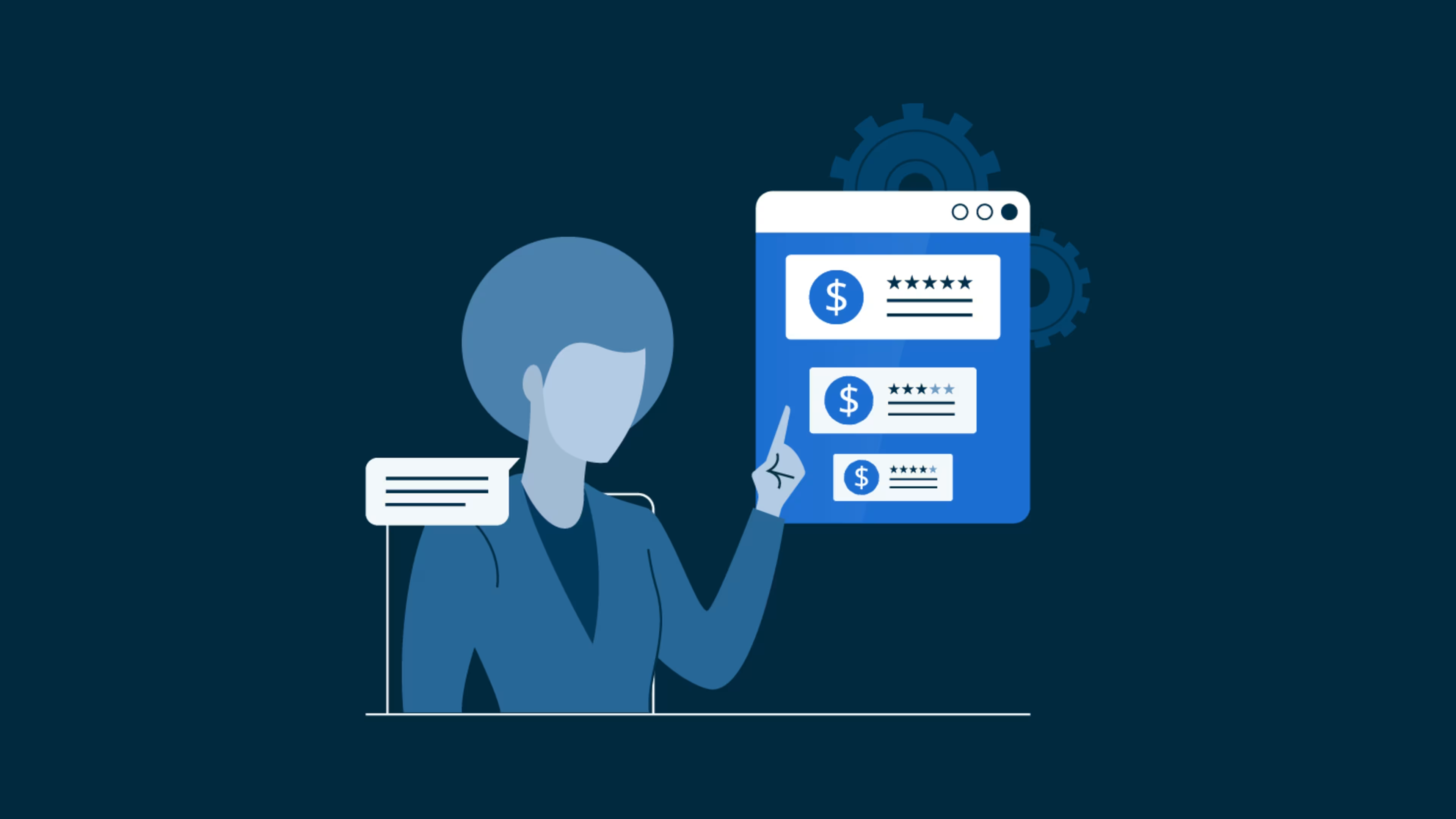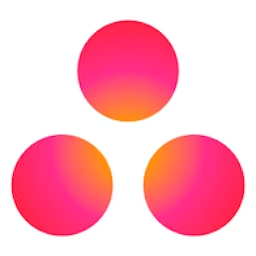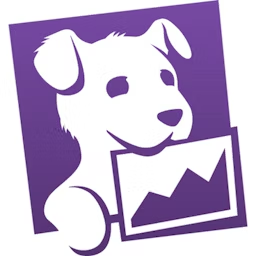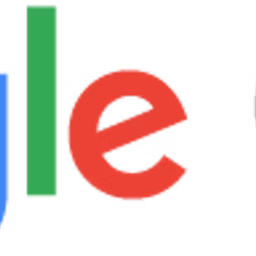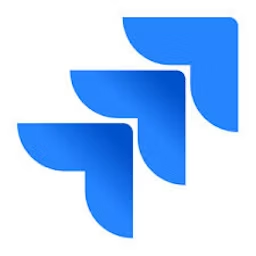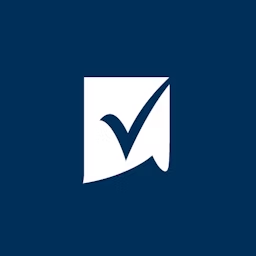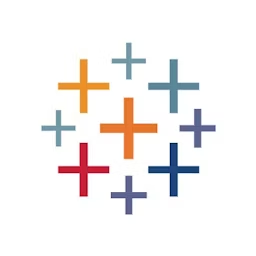Human resources (HR) teams handle vast amounts of data sourced from other teams and departments, ranging from employee demographics and performance metrics to recruitment statistics and turnover rates. Manually structuring and analyzing these large datasets means a never-ending accumulation of spreadsheets and inaccurate insights. Solution? Dashboard software to visualize complex data through charts, graphs, and maps.
Dashboard software helps extract meaningful insights by analyzing raw, unstructured data and making accurate predictions about business trends. But with multiple software options available, it can be confusing to identify a solution to make sense of complex data and pull insights from it. To help choose, we’ve highlighted the top seven HR dashboard software, in alphabetical order, based on verified software reviews. Read more.
We’ve categorized these products into three groups: data visualization and analytics tools, project management tools with dashboard capabilities, and data monitoring tools with visualization options. Irrespective of the category, all tools include the core dashboard software features—data connectors, single view page, and key performance indicator (KPI) monitoring.
1. Asana
Asana is a project and task management platform with dashboard capabilities. It allows HR teams to use pre-built dashboard templates or create new ones for common HR processes such as recruitment, performance appraisals, and employee retention. HR teams can also choose different chart styles (column, line, burnup, donut, and number) to visualize tasks, projects, and goals. Additionally, they can manage dashboard visibility by keeping dashboards private or sharing them with specific team members.
Product features of interestColor customization: Assign unique colors to the various data points used in dashboard charts and graphs. For example, completed tasks might be represented in green, while pending tasks in red.
Collaboration tools: Collaborate and co-edit dashboards by leaving comments and having discussions within task or project entries. Individuals and stakeholders can provide updates within the dashboard on different tasks or projects.
Shareable insights: Generate reports on key HR processes, such as recruitment progress and employee performance, and share them with stakeholders. These reports offer valuable insights into areas of improvement and enable data-driven changes.
Customer support options: Email and knowledge base
Who should consider Asana?
HR teams that need a collaborative dashboard tool to manage complex projects with multiple stakeholders can consider Asana. Its collaboration capabilities enable HR stakeholders and staff to leave comments, engage in discussions, and co-edit dashboards and project entries. These features foster real-time communication and knowledge sharing, especially when coordinating large-scale recruitment efforts, running performance appraisals, or developing training initiatives. Users can also provide updates, share insights, and address concerns within the dashboard, reducing the need for lengthy email chains or separate communication tools.
To present the most up-to-date information, the product information below shows the latest real-time ratings, which may differ from the ratings values at the time this report's analysis was conducted, since new reviews may have been left in the meantime.
Trial/Free Version
- Free Trial
- Free Version
Starting price
Device compatibility
2. Datadog
Datadog is a monitoring and analytics solution with features to create customized HR reporting dashboards. It enables HR teams to use pre-installed dashboard templates to structure raw data and report metrics, issues, logs, events, and more. Users can automate data visualization using options such as geomap charts, heatmaps, stacked graphs, and toplists. They can also access built-in formulas to analyze key HR metrics or use the code editor to write their own formulas.
Product features of interestCompare correlated metrics: Create a customized view that compares multiple metrics and data sources within the dashboard. For instance, HR teams can compare turnover rates with revenue or employee satisfaction.
Collaboration tools: Share dashboards with individuals or teams outside the organization while ensuring secure access and control. The authentication mechanism ensures only designated users or teams can access the shared HR dashboards.
Alerts and issue tracking: Highlight critical performance metrics, service-level objectives (SLOs), and service-level agreements (SLAs) on the dashboard and set custom alerts to spot performance issues. This feature provides real-time visibility and enables proactive monitoring.
Customer support options: Chat, call, email, and knowledge base
Who should consider Datadog?
Datadog can be a viable option for HR departments looking for a dashboard platform to compare metrics for specific processes. The software enables HR teams to select and compare HR metrics directly related to their goals and operations. For example, they can compare how changes in employee satisfaction levels correlate with shifts in customer satisfaction or revenue growth. This feature allows HR teams to visualize how different metrics interact, helping identify correlations and patterns that might otherwise go unnoticed.
To present the most up-to-date information, the product information below shows the latest real-time ratings, which may differ from the ratings values at the time this report's analysis was conducted, since new reviews may have been left in the meantime.
Trial/Free Version
- Free Trial
- Free Version
Starting price
Device compatibility
/ Pro tip
Select software that allows you to set and maintain multiple dashboard views. You can create an operational dashboard to monitor day-to-day business activities, a strategic dashboard to track key metrics such as new employees, annual revenue, and payroll, and an analytical dashboard for historical data analysis and goal-setting based on insights.
3. Domo
Domo is a data visualization tool that HR teams can use to build customizable dashboards. The software offers dynamic and static charts to structure complex data and custom filters to compile important HR metrics such as employee turnover rates and performance analytics. It allows users to create custom dashboards and views with their own layouts, colors, and commentary. Users can also set alerts to be notified when key data points change on the dashboard. Additionally, they can collaborate with their team members with built-in chat functionality.
Product features of interestAI tools: Use generative AI to automate data visualization and create HR dashboards based on user prompts. For example, the HR department can analyze employee turnover trends to create turnover rate charts and historical comparisons.
Pivot tables: Insert pivot tables in the dashboard to transform large and complex datasets into concise, organized summaries. Pivot tables enable stakeholders to aggregate, filter, and drill down into the data.
Variable monitoring: Track and manage dynamic variables to ensure the data displayed on the dashboard is current and relevant. HR teams can use this feature to keep tabs on changing workforce demographics or performance metrics.
Customer support options: Chat, call, email, and resource center
Who should consider Domo?
HR managers looking for an automated dashboard solution to simplify data exploration can consider Domo. The software employs an AI framework that leverages machine learning, natural language processing, and predictive analytics to automate dashboard creation. This framework reduces the effort required to design and populate dashboards manually. HR managers can also monitor the real-time status of variables and customize a single dashboard to display insights related to multiple processes, such as recruitment, employee engagement, and workforce diversity.
To present the most up-to-date information, the product information below shows the latest real-time ratings, which may differ from the ratings values at the time this report's analysis was conducted, since new reviews may have been left in the meantime.
Trial/Free Version
- Free Trial
- Free Version
Starting price
Device compatibility
4. Google Cloud
Google Cloud is a cloud computing suite with dashboard functionality. HR teams can use the software to create customized dashboards to display metrics such as employee engagement rates, overtime rates, and cost per hire. To modify a dashboard, they can add, remove, reposition, or resize the widgets. HR teams can also create a customized dashboard in one project, populate it with widgets, and then share this dashboard configuration with other projects or users. This eliminates the need to create a custom dashboard from scratch for every project.
Product features of interestCharts: Choose line, stacked area, stacked bar, or heatmap charts to visualize data. These charts display data trends over time, allowing HR professionals to observe historical behavior and identify anomalies.
Indicators: Use indicators to view a metric’s most recent value or real-time snapshot. HR teams can predefine the threshold for each metric and use color-coded indicators as visual cues to assess their current status.
Access controls/permissions: Regulate and control who can access, view, edit, or perform specific actions within a dashboard.
Customer support options: Call, knowledge base, and support ticket
Who should consider Google Cloud?
HR teams that already use Google’s suite of products can leverage Google Cloud as their default dashboard tool. The software integrates with other Google applications, including Gmail and Google Analytics. This integration allows HR professionals to pull and visualize data from various tools and embed dynamic data charts or reports directly into their dashboards.
To present the most up-to-date information, the product information below shows the latest real-time ratings, which may differ from the ratings values at the time this report's analysis was conducted, since new reviews may have been left in the meantime.
Trial/Free Version
- Free Trial
- Free Version
Starting price
Device compatibility
5. Jira
Jira is an issue and project tracking tool with dashboard capabilities. HR teams can use Jira dashboards to compile and display information such as the current status of interviews and recruitment project timelines. They can add various gadgets to their dashboards, choose a specific dashboard layout, star their favorite dashboards, or even rename and share their dashboards. Jira dashboards can contain metrics from a single or multiple projects, enabling HR teams to access relevant information from across their workflows.
Product features of interestCustomizable gadgets: Add custom gadgets to your HR dashboard. For example, the activity stream gadget displays a summary of recent activity, while the average age gadget displays the average number of days issues are unresolved.
Custom dashboard slideshow: Plug in your computer to a TV monitor and create a slideshow of custom dashboards. HR teams with multiple dashboards can use this feature to communicate insights during presentations and team meetings.
Reporting and analytics: Generate custom reporting dashboards tailored to specific HR needs. Customization options include selecting data sources, defining filters, and choosing visualizations (charts, graphs, tables, etc.).
Customer support options: Chat, call, email, and knowledge base
Who should consider Jira?
HR teams looking for a dashboard tool with multiple options to drill down into and visualize large data sets can consider Jira. This software offers a list of gadgets that display summaries of Jira project and issue data on the dashboard. HR teams can customize these gadgets to display project and issue details relevant to their use cases. For instance, they can use the introduction gadget to display a configurable introduction message on the dashboard and the text gadget to display important HR announcements, policy updates, or employee recognition messages.
To present the most up-to-date information, the product information below shows the latest real-time ratings, which may differ from the ratings values at the time this report's analysis was conducted, since new reviews may have been left in the meantime.
Trial/Free Version
- Free Trial
- Free Version
Starting price
Device compatibility
/ Pro tip
Look for HR dashboard software that fetches live data from the database to update metrics in real time. This feature gives your HR department immediate insights into data changes, enhancing operational efficiency and facilitating proactive issue resolution.
6. Smartsheet
Smartsheet is another project and task management software with dashboard capabilities. HR teams can use Smartsheet to personalize their dashboards by adding their brand logo, colors, and custom file formats. They can use the reports widget to import real-time data from external reports and sources into the dashboard. Once all the raw data is ready, HR managers can drag and drop elements such as charts and bar graphs to visualize the data.
Product features of interestCustom coloring: Add up to 20 unique colors to each dashboard or log entry. Users can also use the same color for widgets that are on the same dashboard.
Admin tools: Manage the access, ownership, and usage of dashboards. Admins can globally configure rules to add new users and designate what individuals can and can’t do with a dashboard.
Web content widget: Import content, such as videos, charts, and calendars, from third-party tools. Approved domains for embedding content include Domo, Tableau, Google Maps, and Google Sheets.
Customer support options: Call and knowledge base
Who should consider Smartsheet?
HR teams that frequently use Excel spreadsheets to visualize data but want to avoid complicated formulas can consider Smartsheet. In contrast to Excel spreadsheets, Smartsheet uses customizable widgets and a drag-and-drop editor to structure raw HR data. The drag-and-drop method simplifies data input and manipulation, allowing HR teams to adjust timelines and dependencies for tasks and projects. Smartsheet also allows users to customize the color palette for each dashboard, enabling better differentiation and personalization.
To present the most up-to-date information, the product information below shows the latest real-time ratings, which may differ from the ratings values at the time this report's analysis was conducted, since new reviews may have been left in the meantime.
Trial/Free Version
- Free Trial
- Free Version
Starting price
Device compatibility
7. Tableau
Tableau is a data visualization and analytics solution with dashboard capabilities. It supports data import from various external sources, including relational databases, Excel spreadsheets, and cloud platforms. HR teams can visualize the imported data using charts, graphs, tables, motion charts, box plots, and more. They can also use dashboard filters to highlight specific metrics and zero in on required information.
Product features of interestHighlight actions: Use a highlighter to draw attention to specific entries or data points. This feature lets HR teams emphasize specific data subsets for identifying critical issues or tracking trends.
Tooltips: Add context or information for the dashboard viewers. When viewers hover over a term or metric, they get additional information on it. This feature helps build interactivity without taking up extra dashboard space.
Browser hyperlinks: Embed hyperlinked entries and items in the dashboard. This feature allows dashboard viewers to access information hosted outside of Tableau.
Customer support options: Phone, email, chat, and knowledge base
Who should consider Tableau?
Tableau can be a viable option for HR teams that want to import data from external sources, such as job platforms and HR systems, into their dashboards. The software allows users to embed hyperlinks in their dashboards, simplifying access to external resources without leaving the dashboard interface. This saves time for HR teams, reducing the need to switch between different applications.
To present the most up-to-date information, the product information below shows the latest real-time ratings, which may differ from the ratings values at the time this report's analysis was conducted, since new reviews may have been left in the meantime.
Trial/Free Version
- Free Trial
- Free Version
Starting price
Device compatibility
/ Pro tip
Check the dashboard sharing functionality of the software. Many dashboard tools allow users to share customized dashboards with selected information or filters. Other than standard sharing options such as manual exports to PDF and email reports, the software should allow you to embed dashboards into a website or share them via a public link.
How much does HR dashboard software cost?
Human resources dashboard software tools can cost as low as $4.50 per user, per month, or more than $455 per month, depending on various factors—features, data sources, user seats, customization options, business size/type, and integrations. Most HR dashboard tools typically offer the following pricing plans:
Free trials: No-cost plans range from a week to a month and offer access to all or limited software features. These are ideal for businesses that want to try a tool before investing.
Free versions: Free plans offer limited access to basic software features. These are ideal for small-business owners on a budget.
Entry-level plans: Start at $4.50 per user, per month, and offer limited features. These are suitable for HR teams that need basic dashboard features, such as data visualization, employee performance dashboard, and basic reporting.
Mid-tier plans: Range from $10 to $125 per month and offer advanced features such as customizable human resource dashboards, more extensive data integration options, and reporting. These are suitable for HR teams that have outgrown entry-level dashboard tools but don’t require the full range of functionality offered by enterprise-level software.
High-end plans: May cost more than $455 per month and offer a range of additional advanced features, including extensive data analytics, workforce analytics, diversity dashboard, collaboration tools, and enterprise-level security. These plans are suitable for businesses with cross-functional HR teams.
Hidden costs associated with HR dashboard software
Besides the software license price, additional costs associated with HR dashboard software solutions may include:
Data storage costs: Storing large volumes of employee or HR data, especially in cloud-based dashboard solutions, can result in additional data storage charges.
Support and maintenance fees: Software vendors often charge annual or ongoing support and maintenance fees, which cover updates, bug fixes, and technical support.
Add-ons and plug-ins: Some dashboard tools offer add-ons or plug-ins for advanced features, such as employee engagement surveys and predictive analytics, and often come with their own price tags.
Frequently asked questions when selecting HR dashboard software
Here are some questions to ask dashboard software vendors before making a final purchase:
How many users can access the dashboards?
Certain dashboard tools and licensing plans limit the number of users who can access the dashboards you create. Therefore, inquire about user limitations and licensing options beforehand to ensure your shortlisted software accommodates all your HR team members.
How does the software import data from external sources?
The specifics of how data import is handled can vary among dashboard software solutions. Your selected software should provide a feature or interface where users can set up connections to external data sources. This involves specifying the source type (e.g., database, spreadsheet, API), connection credentials, and data location.
Does the software offer multiple visualization options?
Certain projects may require you to present findings in a particular format, and your selected HR dashboard software should support that format. Having access to multiple data visualization options, such as graphs, charts, and animations, will allow you to design interactive dashboards that are also easy to understand.
